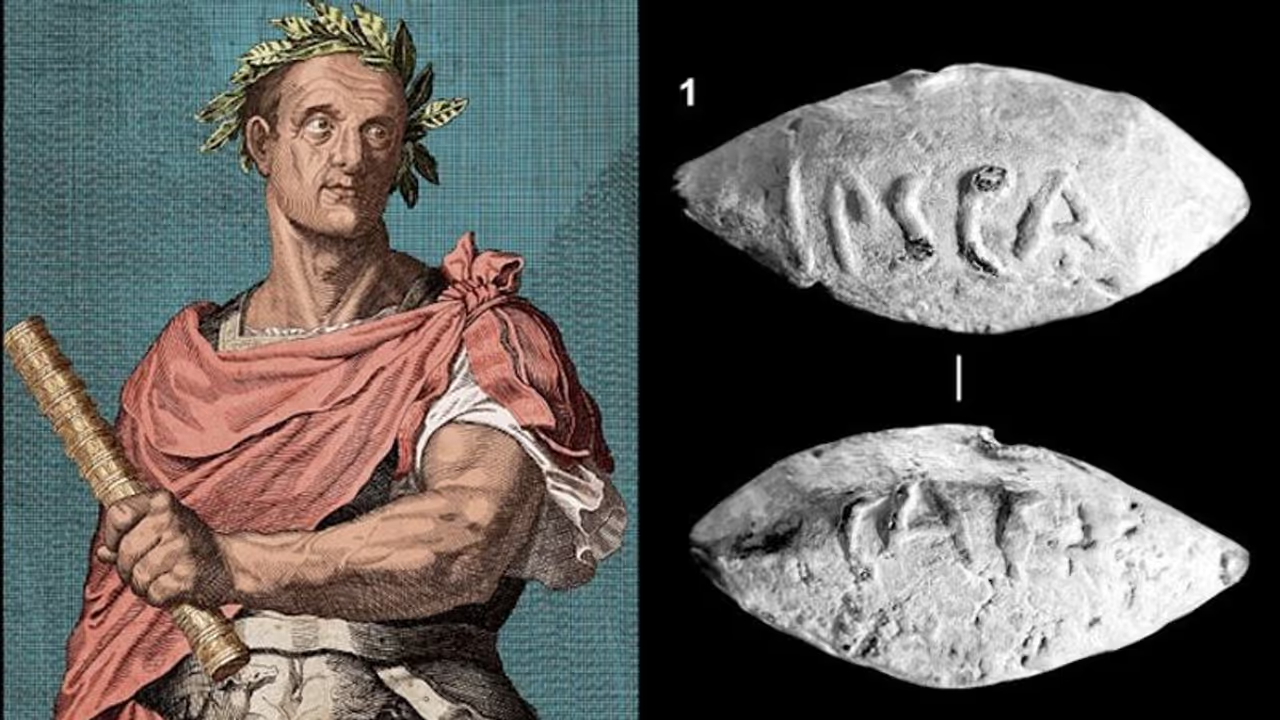An article delves into the fascinating discovery of a 2,000-year-old lead bullet in Spain, inscribed with Julius Caesar's name, providing unprecedented insights into indigenous alliances during the Roman civil war and reshaping historical narratives.
In the annals of history, discoveries often emerge that shed new light on ancient events, rewriting the narratives we thought we knew. Such is the case with a remarkable find in Spain in 2019 – a 2,000-year-old lead bullet inscribed with what appears to be the name of Julius Caesar and an unidentified ancient city. This almond-shaped projectile, likely used in a slingshot, provides intriguing insights into the dynamics of the Roman civil war and the alliances formed by indigenous cities.

The Roman civil war, sparked by Julius Caesar's refusal to relinquish power, reached its zenith with the decisive Battle of Munda in 45 BC, located in Andalusia, southern Spain. This clash marked the triumph of Caesar over the forces of Pompey, securing his dominance and shaping the course of Roman history. Tens of thousands of Pompey's troops were defeated, solidifying Caesar's ascent to power.
According to a report in Live Science, the recently discovered lead bullet, known as a "glans inscripta," measures 1.8 by 0.8 inches and weighs 2.5 ounces. Intriguingly, it bears the inscriptions "IPSCA" and "CAES" on either side. According to researchers, "IPSCA" likely refers to an ancient town involved in the civil war, a town not previously documented in early written sources about the Spanish battles. This finding near Montilla, believed to be the Roman Munda, indicates Ipsca's probable role in the final battles of Caesar's civil war.
Lead projectiles with inscriptions, or "inscribed glandes," were common in the 1st century BC and served as effective means for conveying short, specific messages. Javier Moralejo Ordax, the study's lead author and an assistant professor of archaeology at the Autonomous University of Madrid, suggests that the message on this bullet was likely political propaganda, indicating Ipsca's support for Caesar over Pompey. This adds a new layer of complexity to our understanding of the political allegiances of ancient cities during this turbulent period.
Another lead bullet found in Spain carries the inscription "CAE / ACIPE," interpreted as a derogatory message from Pompey's troops to Caesar. This starkly contrasts with the Ipsca bullet, hinting at the intensity of political rivalries and propaganda campaigns waged on the battlefield. Robert Morstein-Marx, a Roman historian at the University of California, Santa Barbara, underscores the significance of the discovery, especially if the Caesar abbreviation is correct.
Also read: Chinese family of 8 makes luxurious hotel their new home; pay Rs 11,000 per day (WATCH)
The Ipsca bullet's discovery sheds light on the loyalties of indigenous cities during the Roman civil war, where most supported Pompey and his sons. Ipsca, however, appears to have aligned with Caesar, potentially manufacturing ammunition and providing troops for his army. This alliance may have been pivotal in Caesar's victory in Spain, influencing his rise to dictatorship, the fall of the Roman Republic, and the eventual establishment of the Roman Empire.
As the dust of centuries settles, the inscription on a small lead bullet brings forth a tale of political alliances, strategic maneuvering, and the nuanced complexities of ancient warfare. The Ipsca bullet serves as a tangible link to a tumultuous period in Roman history, offering a glimpse into the motivations and allegiances of indigenous cities that played a crucial role in shaping the destiny of an empire. The study's findings, published in the scientific journal Zephyrus, not only enrich our understanding of the past but also underscore the enduring power of artifacts to speak across millennia.
